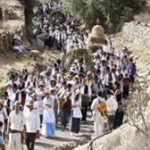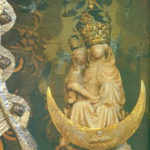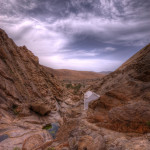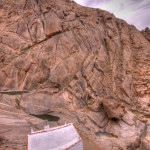Our Lady of the Rock
The Romeria of the Virgen de la Peña.
By Bernie Power with The Voice

Photos by Still Light Photography
September is on us and it is a very busy time for the locals. This time of year they prepare to undertake the long walk known as the Romeria or the Pilgrimage to the small church of the patron saint of the island, known locally as La Peñita or The Virgin of La Peña.
Pilgrimage
The local people will walk, mostly from Antigua but also many people come from much further away too, to pay homage to the saint and pray. They will ask for something like good health or just to say sorry for something they have done. It all begins on the Friday before the third Saturday of September. If you keep an eye out you will see the locals making their way through the hills towards Vega de Rio Palmas, near Betancuria the old capital of Fuerteventura. Once they arrive, they will celebrate with a big party, then the next day a solemn mass.
Folklore
The Virgin has a very strange history, and many different stories that surround her. The actual statue dates from 1400 and is a typical Mediaeval French image, made by French gothic canons. It was brought over to Fuerteventura in 1402 by the first Norman conquerors, lead by Jean de Bethancourt; the man who gave Bentancuria its name. In 1405 the statue was placed in a hermitage built by Jean De Macon that is situated in Vega Rio da Las Palmas.
Hidden Away
In the early days the Normans were often involved in attacks and skirmishes from the local aboriginal Majoreros or locals, and the statue was slightly damaged so she was hidden away. She was finally rediscovered by the monks of Betancuria in 1443, in a small cave at the foot of the mountain, and moved to a different location. Over the next 150 years she was moved, hidden and lost again many times. The last being in 1593, when the Arab pirates invaded Fuerteventura and decimated the Island. In 1650 The Virgen de la Pena became the Patron Saint of Fuerteventura.
Small yet beautiful
The statue is made of alabaster and is only 23cm high. It now has a small wooden canopy too, that was made in about 1705 by a local, Jose Jimenez. The statue was finally put into the new church in Vega Rio de Las Palmas when it was rebuilt in 1716. During the pilgrimage the canopy and statue will be paraded through the village, for everyone to see and possibly to touch.
Many miracles have been attributed to her. So when you see people dressed in national costume and wandering along the roads, now you know where they are going and you are welcome to tag along. Get involved, enjoy a barbeque and confess a few sins at the same time. This is such a holy object, surrounded by myth of miracles and strange appearances that when it became lost, it held a very special place in the hearts of the Catholic community. In 1961, the Island was hit by four hard years of drought so the locals took the statue all around the island to pray for the much needed rain……oh and yes, their prayers were answered and it did in fact begin to rain! A miracle?
 The Voice – Fuerteventura Keep up to date in Fuerteventura with The Voice Magazine
The Voice – Fuerteventura Keep up to date in Fuerteventura with The Voice Magazine






